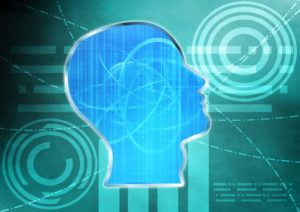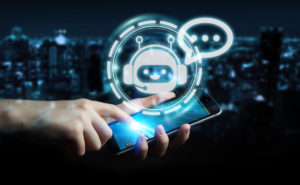
Large Language Models in 2023: Worth the Hype?

(Adao/Shutterstock)
ChatGPT has caught the world’s attention. There’s no denying that. But do large language models, of which ChatGPT is a member, have the staying power to be a transformative force for business in 2023? We once again turn the mic over to the community of prognosticators for some direction.
Investment in large language models will skyrocket in 2023, foresees Luca Antiga, the CTO of Lightning AI, which develops a platform for training and deploying AI.
“Large Language Models (LLMs) like GPT-3 and BERT exhibit the ability to perform complex tasks by crafting input text in a way that triggers the model to solve a specific problem, such as a mathematical quiz,” Antiga says. “LLMs are considered ‘large’ because of the inability to load them on an individual device and the attendant difficulties encountered when training them. Next year, I expect to see a significant increase in the number of startups and established businesses seeking funding or redirecting extant funds to budgets specifically allocated toward creating and training an individual LLM.”
Narrow AI is about to get a lot wider thanks to the LLMs, according to Amit Prakash, co-founder and CTO of business analytics software and services provider ThoughtSpot.
“So far, AI in the business context has been used either for predictive tasks (forecast, fraud, click through, conversion) or to automate low-skill tasks. Most of these applications have been extremely narrow and it takes a lot of feature engineering usually to get it right and makes sense only at large scale,” Prakash says.
“The LLMs such as GPT-3 and generative models such as DALL-E are changing the game and we expect AI to touch almost every aspect of business in the next few years. AI models can be used to assimilate vast amounts of knowledge and deploy it strategically whenever it can improve outcomes ranging from answering specific questions to assisting humans in highly creative tasks by automating significant parts of their workflow.”
There is fear that LLMs will render writers obsolete. According to Varun Ganapathi, the CTO and co-founder at healthcare AI company AKASA, LLMs will actually help people be more creative.
“We’re likely going to see more solutions like GitHub Co-Pilot where LLMs are able to assist people in meaningful ways,” Ganapathi says. “These tools are not going to get everything right but they will help solve that initial writer’s block. When you’re staring at a blank page, it’s often hard to get started. But if you can describe the prompt or problem and the model outputs something, it may give you a good starting point and show you something you can use—even if it’s not entirely what you want. Prompt engineering (i.e. instructing models using the right starting text) will become a new way of writing programs, using natural language.
“I think AI will help in this or similar ways in a lot of domains and it’s very interesting,” he continues. “People thought the big hold-up for AI would be creativity, but ironically it may be the reverse. It may be that AI will actually help us become more creative–by seeding us with initial ideas that we can build upon and refine.”
Accessibility is another big plus for the new generation of AI technology, according to Keshav Pingali, co-founder and CEO of Katana Graph, an AI-powered graph computing company.

How workers interact with AI will have a big role in determining its success in the workplace (Macrovector/Shutterstock)
“The recent spike in popularity in ChatGPT has been heralded as a major breakthrough in delivering safe and useful AI systems that non-technical users can access in a conversational way. In 2023, we can expect more models to be unveiled, as data between the user and the AI assistant will find ways to improve how departments–from marketing, sales, HR, and others–will work,” Pingali says.
“Organizations will face greater pressure to realize AI’s value,” he continues. “While AI has become firmly entrenched in all industries–from financial services to healthcare and others–many organizations still struggle to shift AI proofs-of-concept to full-scale production. In 2023, business/IT decision makers will focus on tighter collaboration to truly address company issues and needs.”
ChatGPT will revolutionize the contact center, but not how you think it will, says Jonathan Rosenberg, CTO of Five9 and co-author of SIP (Session Initiation Protocol), which is used in Voice Over IP (VOIP) communications.
“Chatbots are the obvious application for ChatGPT, but they are probably not going to be the first ones. Why? First, ChatGPT today can answer questions, but it cannot take actions,” Rosenberg says. “When a user contacts a brand, they sometimes just want answers, but often they want something done. Process a return, or cancel an account, or transfer funds. Will this eventually be possible? Without a doubt. But not quite yet. Secondly, when used to answer questions – ChatGPT can answer based on knowledge on the Internet. But it doesn’t have access to knowledge which is not online. Oftentimes, customer inquiries are about information they couldn’t find online – that’s why they called. Finally, ChatGPT excels at generation of text, creating new content derived from existing online information. When a user contacts a brand, they don’t want creative output – they want immediate actions. All of these will get addressed, but it does mean that the first use case is probably not chatbots!”
The lack of high-quality, labeled data has held AI back. But new training techniques promise to jumpstart progress, says Yossi Synett, chief scientist at Evinced, which can be seen below.

The barrier to entry for chatbot developmente has fallen precipitiously thanks to technologies like ChatGPT (sdecoret/Shutterstock)
“More and more we are finding ways to pre-train models using self-supervised learning followed by fine-tuning models to a specific task,” Synett says. “The best and most proven example of this is in NLP (natural language processing) where techniques called Masked Language Modelling (making the model predict hidden words in sentences) and Causal Language Modeling (making the model predict the next word in sentences) have totally changed the game. Since self-supervised learning doesn’t require labeled data and fine-tuning requires far less labeled data this makes it much easier to train complex models. Complementing this are new techniques that can be used to better select examples for labeling which further reduces the financial roadblock to utilizing AI.”
We’re entering a new era in customer service thanks to large language models, says Hardy Myers, senior vice president of business development and strategy for Cognigy, a provider of a conversational AI platform.
“New and improved levels of engagement and agility will come as a result of large language models that enable Conversational AI to create answers in real time. As a maturing technology, the AI is not just able to understand what customers want but able to customize responses and insights on the fly,” Myers writes. “Conversational AI will move beyond knowledge management to agent empowerment, relieving a tired workforce and improving customer satisfaction. By automating mundane tasks, Conversational AI will free up agents across all industries to pursue the more engaging and complex customer service tasks. This will result in not only higher resolutions scores and improved customer retention – but higher job satisfaction among agents.”
In 2023, AI will finally get its ROI, says Jeff Catlin, head of Lexalytics, which is owned by InMoment.
“The slowdown in tech spending will show up in AI and machine learning in two ways: major new AI methodologies and breakthroughs will slow down, while innovation in AI moves toward ‘productization,’” Catlin says. “We’ll see AI get faster and cheaper as the innovation moves into techniques to make deep learning less expensive to apply and faster through models like DistilBERT, where accuracy goes down a bit, but the need for GPU’s is reduced.”
LLMs are poised for growth in the future, but we should also keep in mind how the technology can potentially impact society, according to ChatGPT, the generative LLM created by OpenAI.
“As a language model, I don’t have the ability to make predictions about the future,” ChatGPT says. “However, I can tell you that large language models like myself have been making rapid progress in recent years, and that trend is likely to continue in the near future. In particular, I expect to see continued advancements in the ability of language models to understand and generate natural language, as well as in their ability to perform a wide range of tasks, such as language translation, summarization, and question answering.
“Additionally, I think it would be also important to think about the ethical and societal implications of the deployment of these models, such as the impact of models on jobs, and the potential for bias and manipulation,” the LLM says. “Moreover, there’s a ongoing research in the field of NLP around few-shot and zero-shot learning, which will allow to train models [sic] with less labeled data, and generalize better to unseen data, which will open up many opportunities for the use of such models in real-world applications.
“The field of NLP is rapidly evolving and it’s hard to predict the future,” ChatGPT continues, “but I think it’s fair to say that we will see more and more applications of language models in our daily lives, and continue to improve its capabilities in many areas.”
Related Items:
The Drawbacks of ChatGPT for Production Conversational AI Systems
What’s Up with Cloud in 2023? Industry Predictions
Big Things Ahead for AI in 2023: Predictions































